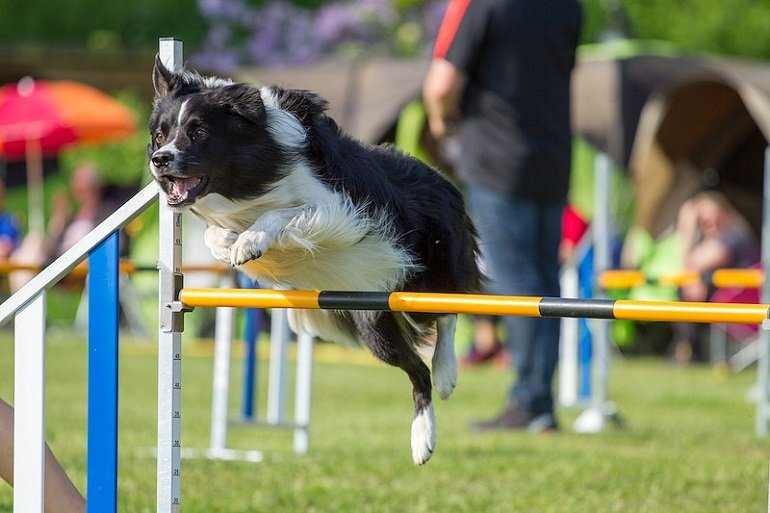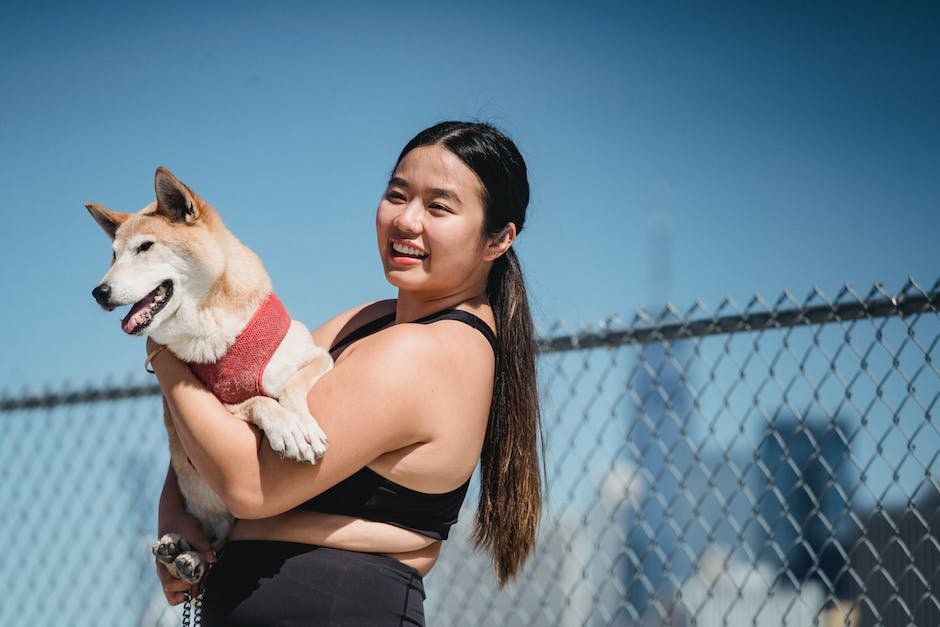Ready to embark on the adventure of puppy training? As the proud owner of a playful bundle of fur, you’re likely eager to teach your new four-legged companion the ways of the world. But, where to begin? Fret not, for in the realm of modern dog training, clickers have emerged as wondrous tools that can shape your pup’s behavior in a captivating yet effective manner. Harnessing the power of positive reinforcement, these handheld devices hold the key to unlocking your furry friend’s potential. So, put aside your traditional training methods and get ready to explore the fascinating role of clickers in puppy training. With their ability to enhance communication and foster a deeper understanding between you and your pup, clickers might just become your newest and most beloved training partner.
Table of Contents
- Setting the Stage: Understanding Clicker Training for Puppies
- The Benefits of Clicker Training in Puppy Education
- Effective Techniques for Incorporating Clickers in Puppy Training
- Guiding Principles for Successful Clicker Training Sessions with Puppies
- Exploring Advanced Applications of Clicker Training in Puppy Education
- Q&A
- Insights and Conclusions

Setting the Stage: Understanding Clicker Training for Puppies
Clicker training is a powerful and positive method for teaching puppies new behaviors and reinforcing desired ones. By using a clicker, a small handheld device that makes a distinct clicking sound, trainers can signal to their puppies instantly when they perform a desired behavior. This technique has gained popularity in puppy training due to its effectiveness and ability to create a strong bond between the trainer and the pup.
One of the key principles of clicker training is the concept of “operant conditioning.” This means that puppies learn through the consequences of their actions. When a puppy does something correctly, such as sitting or walking on a leash without pulling, the trainer immediately clicks and rewards the pup. The click acts as a way of pinpointing the exact moment the behavior occurred, while the reward, usually a tasty treat or verbal praise, reinforces the action and encourages the puppy to repeat it in the future.
- Clicker training is based on positive reinforcement, avoiding the use of harsh punishments or aversive methods.
- Consistency is crucial in clicker training. The trainer must always click and reward for the desired behavior, even if the puppy only does it partially correct.
- Breaking down complex behaviors into smaller steps, known as “shaping,” allows puppies to learn at their own pace and helps prevent frustration.
- Clicker training can be used to teach a wide range of commands, from basic obedience cues like “sit” and “stay” to more advanced tricks.
In summary, clicker training for puppies is a positive and effective method that helps build communication and trust between trainers and their furry companions. By using the clicker as a precise marker of desired behaviors and consistently rewarding the pup, trainers can shape their puppies into well-behaved and happy members of the family.

The Benefits of Clicker Training in Puppy Education
Clicker training, a positive reinforcement method in puppy education, offers numerous benefits that aid in the development of a well-behaved and emotionally balanced pet. This training technique involves using a small handheld device that emits a distinct clicking sound, followed by a reward (usually a treat), to reinforce desired behaviors. Unlike traditional training methods that rely on punishment and dominance, clicker training focuses on shaping behaviors through positive reinforcement.
Enhanced Communication: Clicker training creates a clear and concise means of communication between puppy and owner. By associating the clicker sound with a reward, the puppy quickly learns to comprehend when they have performed a desired action, making it easier to reinforce positive behaviors and discourage negative ones.
Improved Focus and Engagement: The clicker acts as a signal to the puppy that they have accomplished something right, instantly capturing their attention and motivating them to repeat the behavior. This heightened focus and engagement makes training sessions more efficient, allowing for quicker progress and an overall more enjoyable experience for both puppy and owner.
Positive Relationship Building: Clicker training fosters a positive relationship between puppy and owner based on trust and mutual respect. By using rewards rather than reprimands, this training method strengthens the bond between the two, leading to a more obedient and happy pet that is eager to please.
- Accelerated Learning: Clicker training accelerates the learning process by breaking down complex behaviors into smaller, manageable tasks. This incremental approach allows puppies to grasp new commands and tricks more easily, maximizing their potential as quick learners.
- Reduced Stress and Anxiety: The gentle and reward-based nature of clicker training helps alleviate anxiety and stress in puppies. By promoting positive experiences and minimizing the use of punishment, this method establishes a safe and supportive environment for learning.
- Versatility and Fun: Clicker training can be used to teach a wide range of behaviors, from basic commands like sit and stay to more advanced tricks such as roll over or fetch. Its versatility provides endless opportunities for engaging and fun interactions with your furry companion.

Effective Techniques for Incorporating Clickers in Puppy Training
When it comes to training your furry little friend, using clickers can be a powerful tool in your arsenal. Here are some effective techniques that can help you incorporate clickers into your puppy training routine:
- Establish a Positive Association: Start by associating the sound of the clicker with something positive. Every time you click, follow it up immediately with a treat or praise. This helps your puppy understand that the clicker signifies a reward, making them eager to respond to it.
- Timing is Key: It’s crucial to click at the exact moment your puppy performs the desired behavior. This precision helps them understand which action is being rewarded. By capturing the behavior with impeccable timing, you reinforce the connection in their mind and speed up the learning process.
- Shape Behavior Gradually: Break down complex behaviors into smaller achievable steps. Click and reward each incremental progress until your puppy successfully accomplishes the entire desired behavior. This technique, known as shaping, helps them grasp the behavior in manageable increments and boosts their confidence along the way.
- Consistency is Key: Stick to a consistent clicker training routine. Use the same clicker sound and establish a clear signal for when training sessions begin and end. Consistency helps your puppy understand the expectations and reinforces their learning.
Incorporating clickers in puppy training sessions allows for clear communication and timely rewards, strengthening the bond between you and your furry companion. Give these techniques a try and watch your puppy flourish as they learn and grow!
Guiding Principles for Successful Clicker Training Sessions with Puppies
Clicker training is a highly effective method for teaching puppies new behaviors and reinforcing positive actions. To ensure successful clicker training sessions with your furry friend, it’s important to keep a few guiding principles in mind:
- Consistency: Consistency is key when it comes to clicker training. Use the clicker to mark the desired behavior every time it occurs, followed by a reward. Be consistent in your timing and ensure that the click always precedes the treat, so your puppy can make the connection between the click sound and the reward.
- Patience: Remember that puppies have short attention spans and are still learning how to learn. Be patient with them and set realistic expectations. Start with short, focused training sessions and gradually increase the duration as their attention span develops.
- Positive Reinforcement: Clicker training relies on positive reinforcement, so it’s crucial to use rewards that motivate your puppy. Find out what treats or toys your puppy finds most enticing and use them as rewards during training. This positive association will help to foster a strong bond between you and your pup.
By following these guiding principles during your clicker training sessions, you can create a fun and effective learning environment for your puppy. Enjoy the journey of watching your furry friend develop new skills and behaviors through this positive and rewarding training method.
Exploring Advanced Applications of Clicker Training in Puppy Education
Puppy education plays a crucial role in shaping a dog’s behavior and ensuring their well-being. Clicker training, a positive reinforcement technique, has gained popularity in recent years for its effectiveness in teaching puppies basic obedience commands. However, clicker training can go far beyond the basics, offering a vast array of advanced applications for the progressive development of a puppy’s skills.
In this section, we will dive into some innovative ways to apply clicker training in puppy education:
- Socialization: Clicker training can aid in socializing puppies with humans, other animals, and challenging environments. By associating the sound of a click with positive reinforcements, such as treats or praise, puppies learn to be comfortable and confident in various social situations.
- Complex commands: Once your puppy has mastered the basics, clicker training can be used to teach them more complex commands and tricks. From retrieving specific objects to performing agility courses, the precision of the clicker can help fine-tune their understanding and execution of these advanced skills.
- Problem-solving: Clicker training encourages puppies to think independently and problem-solve. By rewarding them for finding solutions to puzzles or overcoming obstacles, you can foster their cognitive development and enhance their problem-solving abilities.
By exploring these advanced applications of clicker training, you can unlock your puppy’s full potential and create a harmonious bond between you and your furry friend. Remember, patience, consistency, and positive reinforcement are the keys to successful clicker training!
Q&A
What are clickers in puppy training?
Clickers are small handheld devices that make a distinct clicking sound when pressed. They are used as markers to signal to puppies that they have performed a desired behavior correctly.
How do clickers help with puppy training?
Clickers help create clear communication between the trainer and the puppy. By associating the sound of the clicker with positive reinforcement, puppies learn to understand and repeat desired behaviors more quickly.
Do clickers work for all puppies?
Yes, clickers can be effective for training most puppies. However, every puppy is unique, and some may respond better to other training methods. It’s important to find what works best for your individual puppy.
When should I start using clickers in my puppy’s training?
You can begin using clickers as early as 8 weeks old when a puppy’s attention span starts to develop. It’s easier to introduce clickers early on to establish a positive association with the sound.
Are clickers only used for basic obedience training?
No, clickers can be utilized for a wide range of training exercises beyond basic obedience. They can be helpful in teaching tricks, agility training, and even addressing behavioral issues in puppies.
How should I introduce clickers to my puppy?
To introduce clickers, start by clicking the device followed by offering a treat immediately. Repeat this process several times until the puppy associates the click with a reward. Later, use the clicker to mark desired behaviors and follow up with a treat or praise.
Can I overuse the clicker during training?
While it’s important to have consistency when using the clicker, overusing it can dilute its effectiveness. Use the clicker sparingly and pair it with positive reinforcement consistently to maintain its value as a training tool.
What if my puppy is scared of the clicker sound?
If your puppy is scared of the clicker sound, you can try using a softer or quieter clicker or muffle the sound with your hand initially. Gradually increase the volume over time as your puppy becomes more comfortable with the sound.
Can clickers replace other training methods?
Clickers are a useful tool in puppy training, but they shouldn’t replace other essential training methods. Pairing clickers with verbal cues, positive reinforcement, and consistency will yield the best results in shaping your puppy’s behavior.
Can I use clickers with adult dogs too?
Absolutely! Clickers can be used with dogs of all ages. However, older dogs may require more time to understand the new training method, so patience and consistency are key when introducing clickers to adult dogs.
Insights and Conclusions
As we bid adieu to this insightful exploration of the role of clickers in puppy training, let us pause to reflect on the journey we’ve embarked upon. Like a symphony orchestrating a melodious masterpiece, clicker training has proven to be an invaluable tool in the realm of canine education.
We ventured into the world of puppy training, unraveled the mysteries of communication, and witnessed the transformative power of positive reinforcement. The clicker’s gentle click echoed through the numerous training sessions, effectively shaping behavior and fostering a bond between puppies and their devoted owners.
As the curtain falls on this chapter, it is essential to acknowledge the potential pitfalls and challenges one may encounter on the path to puppy enlightenment. Patience and consistency are the guardians of success, as each click propels our furry companions towards the virtuous path of obedience.
Remember, dear readers, every click holds a promise of growth and understanding, a possibility for dogs to thrive as they blossom into well-behaved members of our families. With each click, let us cherish the sweet serenade of progress and praise, resonating in the hearts of both puppy and trainer.
While our exploration of clickers in puppy training may reach its conclusion, the story does not end here. It merely marks a new beginning, a call to action for all aspiring dog whisperers. Armed with knowledge, enthusiasm, and a trusty clicker, may we embark on this incredible journey of nurturing four-legged companions, forever guided by the harmonious rhythm of positive reinforcement.
And so, dear readers, as we part ways, may you embrace the artistry of clicker training with open hearts and steady hands. Let the click be your guide, and may your journey be filled with wagging tails, joyful barks, and a multitude of milestones. Farewell, until we meet again, on this symphonic voyage to eternal companionship.
As an affiliate, my content may feature links to products I personally use and recommend. By taking action, like subscribing or making a purchase, you’ll be supporting my work and fueling my taco cravings at the same time. Win-win, right?
Want to read more? Check out our Affiliate Disclosure page.